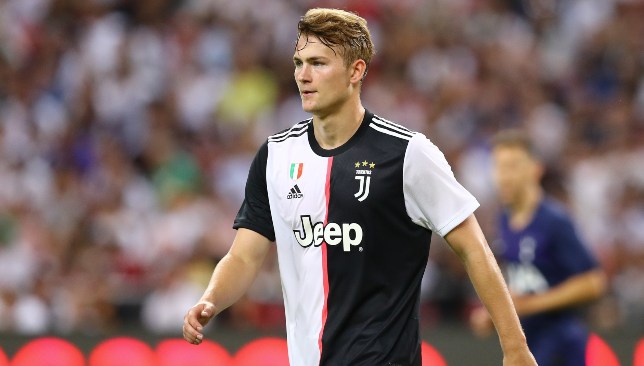
Few other leagues, if any, can match the volume of trades conducted over a heated summer on the Italian Peninsula.
Proper planning and execution over the summer will pay off in the spring and so to gauge which side is in the best shape, we’ve graded the transfer business of the ‘big five’.
All fees gathered from transfermarkt.com
JUVENTUS | GRADE = B- | NET SPEND = -€13m
Expenditure = €188.5m
Income = €201.5m
Key arrivals = Matthijs de Ligt (€85.5m – Ajax), Danilo (€37m – Manchester City), Merih Demiral (€18m – Sassuolo), Aaron Ramsey (free – Arsenal), Adrien Rabiot, Gianluigi Buffon (both free – Paris Saint-Germain), Gonzalo Higuain (end of loan – Chelsea)
Key departures = Joao Cancelo (€65m – Manchester City), Leonardo Spinazzola (€29.5m – Roma), Moise Kean (€27.5m – Everton), Emil Audero (€20m – Sampdoria), Andrea Barzagli (retired)
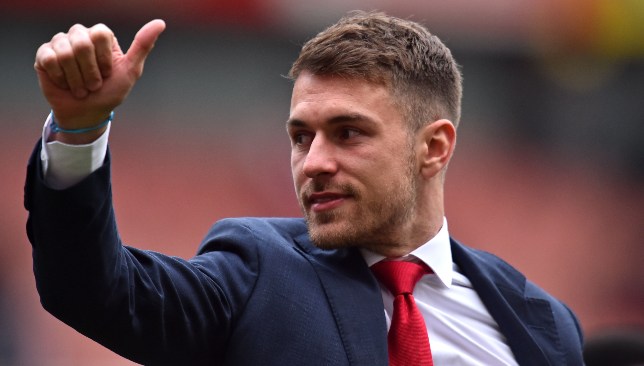
Aaron Ramsey.
What they needed to do
The eight-time-successive Serie A winners’ all-encompassing goal remained – conquer the Champions League.
Another statement signing was essential to build on the momentum earned by Cristiano Ronaldo’s arrival a year prior.
Major surgery on an uninspiring midfield was further priority. Freebie Emre Can had looked expensive at the price throughout an underwhelming 2018/19, while the miles are showing on the rusted engines of fellow Germany midfielder Sami Khedira and France battler Blaise Matuidi.
A refresh at centre-back was also a necessity. The axis of 35-year-old Giorgio Chiellini – who would go on to cruelly suffer an anterior cruciate ligament tear on August 30 – and 32-year-old Leonardo Bonucci had looked jaded against cavalier Ajax (more on them later) in Europe.
These renovations from sporting director Fabio Paratici were complicated by the specific requirements of maverick – by Juve’s staid standards – new head coach Maurizio Sarri. With the ex-Napoli supremo’s exacting philosophy wedded to utilising a consistent XI, moving out dead wood was essential to maintain squad harmony and purpose of goal.
What they got done
Twin goals were attained with the capture of coveted Ajax centre-back Matthijs de Ligt.
The 20-year-old man mountain had been expected to land at Barcelona, Paris Saint-Germain, Bayern Munich or Manchester United. In a shot to the arm for all involved at Allianz Stadium, he plumped for Juve at gargantuan cost.
Serious injury to Chiellini has now disrupted a patient succession plan. Teething problems were evident throughout a troubled second half in Sunday’s eventual – and eventful – 4-3 victory against Napoli, none more than his uncomfortable own goal to make it 3-3.
This erratic display in the absence of Chiellini inspired an instant move for Bayern Munich’s 30-year-old Germany international Boateng. It would, however, collapse before the deadline.
Arrivals in midfield were conducted in typically adroit manner. Significant wages convinced Arsenal’s Aaron Ramsey and Paris Saint-Germain’s Adrien Rabiot to head for Turin once their contracts ran down.
A horse trade saw Portugal’s Joao Cancelo become the world’s most-expensive right-back and Danilo head the other way from Manchester City, at almost half the price.
So far, so good. Yet an inability to ship out unwanted players was exemplified by Khedira and Matuidi starting the opening 1-0 win at Parma.
The significant wages that lured Can from Liverpool have made him burdensome to Juve. Confusion abounds about the roles of Juan Cuadrado, Mario Mandzukic, Douglas Costa, Federico Bernardeschi and Rodrigo Bentancur.
Argentina forward Paulo Dybala appeared destined to become another high-value sale to Manchester United, Tottenham Hotspur or Paris Saint-Germain. Juve are, instead, stuck with an aggrieved – and depreciating – asset.
Strongest 2019/20 line-up – 4-3-3: Wojciech Szczesny; Danilo, Leonardo Bonucci, Matthijs De Ligt, Alex Sandro; Aaron Ramsey, Miralem Pjanic, Adrien Rabiot; Douglas Costa, Gonzalo Higuain, Cristiano Ronaldo
NAPOLI | GRADE = B | NET SPEND = €71.8m
Expenditures = €128m
Income = €56.2m
Key arrivals = Hirving Lozano (€38m – PSV Eindhoven), Konstantinos Manolas (€36M – Roma), Alex Meret (€22m – Udinese), Eljif Elmas (€16m – Fenerbahce), David Ospina (€3.5m – Arsenal), Giovanni Di Lorenzo (€8m – Empoli), Fernando Llorente (free transfer – Tottenham Hotspur)
Key departures = Amadou Diawara (€21m – Roma), Carlos Vinicius (€17m – Benfica), Raul Albiol (€5m – Villarreal), Simone Verdi (€4m loan fee – Torino)
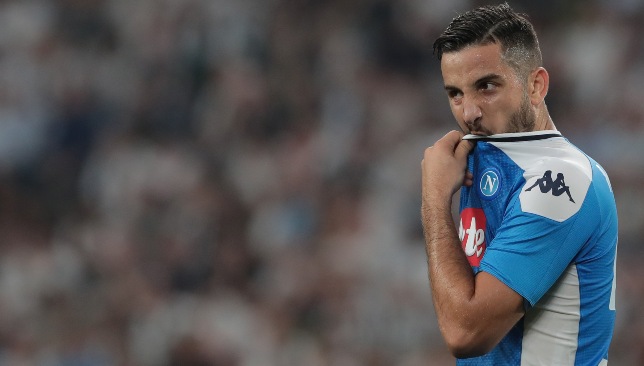
Kostas Manolas.
What they needed to do
The tag of ‘nearly men’ has frustratingly hung over Napoli’s necks.
2017/18’s near miss still stings. This pain was carried over into a 2018/19 in which they finished second, without ever truly challenging.
Narrowing this gaping 11-point gap was the overarching mission for the Partenopei and charismatic president Aurelio De Laurentiis.
An analysis of the ‘for’ and ‘against’ columns, however, saw only fine refinements needed in attack. Namely, lowering the average age.
At the back, the absence of a premier No1 since Pepe Reina’s switch to AC Milan in July 2018 has been obvious. So too a quality partner for Kalidou Koulibaly at centre-back with veteran Raul Albiol determined to return to Spain.
What they got done
Napoli’s summer is defined by the lengthy pursuit of Real Madrid’s unwanted playmaker James Rodriguez.
They must hope its ultimate failure does not come to decide their season’s fate.
Recompense, however, came in the guise of prolific Mexico winger Hirving Lozano. A second-half cameo in Turin almost tipped the scales in Napoli’s favour, with his searing pace and desire to jet inside the penalty box unsettling the holders.
Head coach Carlo Ancelotti has also had a top-class replacement for Albiol procured for him. Greece centre-back Manolas would grace most sides in Europe, although the concession of seven goals in his opening pair of Serie A games is worrisome.
Elsewhere in defence, right-back Di Lorenzo is making a quick step-up from relegated Empoli.
The bold signings of a trio of goalkeepers should provide a permanent solution.
Only time will tell if these alterations can topple the giants of Juventus and end a 30-year wait for Serie A glory.
Strongest 2019/20 line-up – 4-2-3-1: Alex Meret; Giovanni Di Lorenzo, Kostas Manolas, Kalidou Koulibaly, Faouzi Ghoulam; Allan, Piotr Zielinski; Lorenzo Insigne, Fabian Ruiz, Hirving Lozano; Dries Mertens
INTER MILAN | GRADE = A+ | NET SPEND = €103.4m
Expenditures = €155m
Income = €51.6m
Key arrivals = Romelu Lukaku (€65m – Manchester United), Valentino Lazaro (€22m – Hertha Berlin), Matteo Politano (€20m – Sassuolo), Nicolo Barella (€12m loan fee – Cagliari), Stefano Sensi (€5m loan fee – Sassuolo), Diego Godin (free transfer – Atletico Madrid), Alexis Sanchez (loan – Manchester United), Cristiano Biraghi (loan – Fiorentina), Lucien Agoume (€4.5m – Sochaux)
Key departures = Mauro Icardi (€5m loan fee – Paris Saint-Germain), (Zinho Vanheusden (€12.6m – Standard Liege), George Puscas (€8m – Reading), Ivan Perisic (€5m loan fee – Bayern Munich), Miranda (free transfer – Jiangsu Suning), Joao Mario (loan – Lokomotiv Moscow), Radja Nainggolan (loan – Cagliari), Dalbert (loan – Fiorentina), Keita Balde (loan ended – Monaco), Sime Vrsaljko (loan ended – Atletico Madrid)
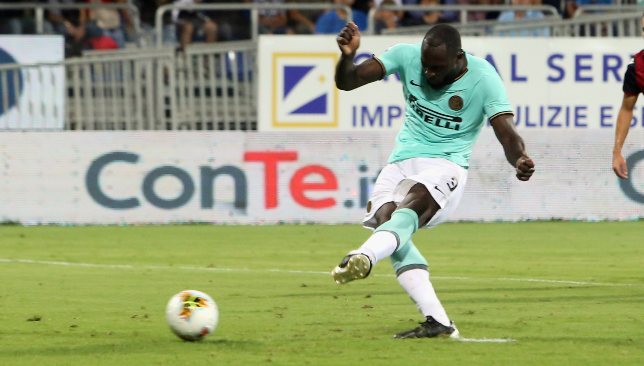
Romelu Lukaku.
What they needed to do
The grand ambitions of serial Serie A title winner Antonio Conte needed meeting.
Inter’s new head coach demanded top-class signings with the suitable skillset for his favoured three-man defence. Improvements at centre-back and wing-back were key.
An injection of youth in midfield would provide the drive and desire inherent in Conte’s warrior philosophy. The Nerazzurri had positioned themselves well in the chase for Cagliari’s emerging Italy international Barella throughout the season and needed to get the deal done.
The shadow of unwanted striker Icardi, however, lingered over the club. A terminal breakdown in relations between the controversial – now stripped – captain, volatile agent/wife Wanda Nara and CEO Giuseppe Marotta threatened plans to procure a requisite replacement.
There was also a further need to relinquish fellow big earners Radja Nainggolan and Ivan Perisic, in order for owners Suning to fund Conte’s plans within the parameters of Financial Fair Play.
What they got done
Conte, as Juve found out in 2012, is a hard boss to please.
But the 50-year-old can only be impressed by what the sage Marotta was able to engineer this summer.
The headline addition was Lukaku, a centre forward Conte thought he’d first snaffled at Chelsea in 2017. Months of delicate negotiations with United saw the Belgium striker brought in at fair price.
Their late loan swoop for team-mate Sanchez is costly in regards to the share of exorbitant wages, though boasts significant upside at minimised risk.
But the deadline-day shedding of the antagonistic Icardi to PSG could be their most-important move. Reported legal action about his “discriminatory” inaction during his final months in Milan only added to the sense of a circus act.
With Nainggolan and Perisic already gone by then, an efficacious clearing of the boards is obvious.
Elsewhere, Austria wide man Lazaro has all the necessary attributes to prosper under the Conte at San Siro. Behind him is ex-Atletico Madrid talisman Godin.
Inter’s cornering of the domestic centre midfield market has already borne fruit with Sensi’s excellent debut against Lecce. Barella is a work in progress.
Conte can have no complaints with his side on top after two matches. Juventus beware.
Strongest 2019/20 line-up – 3-5-2: Samir Handanovic; Diego Godin, Milan Skriniar, Stefan de Vrij; Valentino Lazaro, Stefano Sensi, Matias Vecino, Marcelo Brozovic, Kwadwo Asamoah; Romelu Lukaku, Lautaro Martinez
AC MILAN | GRADE = C | NET SPEND = €75.5m
Expenditures = €109m
Income = €33.5m
Key arrivals = Rafael Leao (€25m – Lille), Franck Kessie (€24m – Atalanta), Theo Hernandez (€20m – Real Madrid), Ismael Bennacer (€16m – Empoli), Ante Rebic (€5m loan fee – Eintracht Frankfurt), (Leo Duarte (€11m – Flamengo)
Key departures = Patrick Cutrone (€18m – Wolverhampton Wanderers), Manuel Locatelli (€10m – Sassuolo), Gustavo Gomez (€4.5m – Palmeiras), Cristian Zapata (free transfer – Genoa), Riccardo Montolivo (free transfer), Andrea Bertolacci (free transfer), Tiemoue Bakayoko (end of loan – Chelsea), Ignazio Abate (free transfer), Andre Silva (loan – Eintracht Frankfurt)
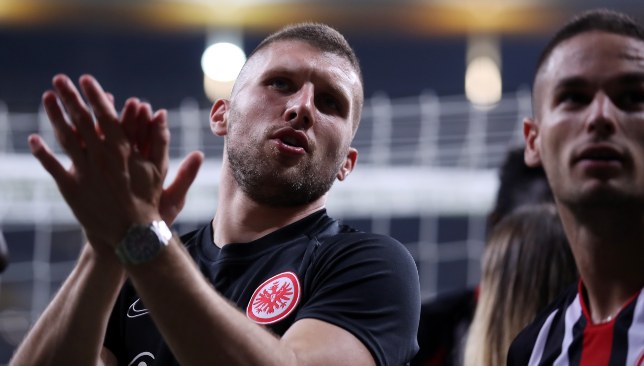
Ante Rebic.
What they needed to do
Another season, another change of direction for the wanting Rossoneri.
Club-stalwart Gennaro Gattuso’s fate was sealed when hallowed – and essential – Champions League qualification was missed by one point. The pivot to Sampdoria’s Marco Giampaolo required a different brand of footballer, to stand any chance of success.
With strict Financial Fair Play sanctions hanging over the red half of San Siro, successfully delivering into the treasure trove of knowledge boasted by new technical leaders Paolo Maldini and Zvonimir Boban was essential. Their ability to trade away unwanted parts would also be tested.
Giampaolo’s slavish devotion to a 4-3-1-2 system ensured that another striker had to be brought in. Similarly, someone capable of adding drive and control at the base of the midfield diamond – think Andrea Pirlo under Carlo Ancelotti – had to be procured.
With Zapata gone and the likes of the inconsistent Mateo Musacchio failing to complement the superb Alessio Romagnoli, an injection of quality at centre-back could only help.
Width must also be provided by ceaseless and adventurous full-backs.
What they got done
Steady, but not spectacular, is an apt way to describe Milan’s pre-season.
Fanciful links to the likes of new Real Madrid forward Luka Jovic did not come to fruition. A gamble was instead taken on the continued upwards progress of Portugal Under-21 forward Leao, while Croatia forward Rebic’s return to Serie A should be seen as a positive move.
Both could feature prominently if Piatek cannot work effectively in Giampaolo’s system.
In defence, Milan have gambled on Hernandez showing the quality of old rather than the shell of a player on display at Real Sociedad. The 23-year-old centre-back Duarte grew into a key man for Flamengo, yet boasts zero international experience – at any level – for Brazil.
Their engine room has been bolstered by the compulsory purchase of Ivory Coast international Kessie. Their smartest piece of business, however, could be the multi-talented Bennacer.
A decision to tie up a switch from Empoli before he shone during victory for Algeria at the Africa Cup of Nations was prudent. The Arsenal youth product has the all-round game needed to run Giampaolo’s midfield.
Has enough been done to satisfy the new coach? A start in midfield for goal-shy forward Fabio Borini in defeat at Udinese spoke volumes, so too successive underwhelming run-outs in attack for the limited Samu Castillejo.
Required sales were also not substantial.
Striker Cutrone departed to Wolves with a blast about not believing in home-grown talent. Attempts to instantly flip Kessie to the same club did not reach fruition.
The inclusion of Silva in the Rebic deal removes yet another vestige of 2017’s foolish spend under ex-owner Li Yonghong.
Deals have been done. Whether they are enough to cure problems on and off the pitch is improbable.
Strongest 2019/20 line-up – 4-3-2-1: Gianluigi Donnarumma; Davide Calabria, Leo Duarte, Alessio Romagnoli, Theo Hernandez; Franck Kessie, Ismael Bennacer, Hakan Calhanoglu; Lucas Paqueta, Ante Rebic; Krzysztof Piatek
ROMA | GRADE = C | NET SPEND = €4.2m
Expenditures = €109m
Income = €103.3m
Key arrivals = Leonardo Spinazzola (€29.5m – Juventus), Pau Lopez (€23.5m – Real Betis), Bryan Cristante (€21m – Atalanta), Amadou Diawara (€21m – Napoli), Chris Smalling (€3m loan fee – Manchester United), Gianluca Mancini (€3m loan fee – Atalanta), Jordan Veretout (€1m – Fiorentina), Davide Zappacosta (loan – Chelsea), Henrikh Mkhitaryan (€3m loan fee – Arsenal), Nikola Kalinic (€2m loan fee – Roma)
Key departures = Konstantinos Manolas (€36m – Napoli), Luca Pellegrini (€22m – Juventus), Stephan El Shaarawy (€16m – Shanghai Shenhua), Gerson (€11.8m – Flamengo), Ivan Marcano (€3m – Porto), Gregoire Defrel (€3m loan fee – Sassuolo), Steven Nzonzi (loan – Galatasaray), Daniele De Rossi (free transfer – Boca Juniors), Robin Olsen (loan – Cagliari), Rick Karsdorp (loan – Feyenoord), Patrick Schick (€3.5m loan fee – RB Leipzig)
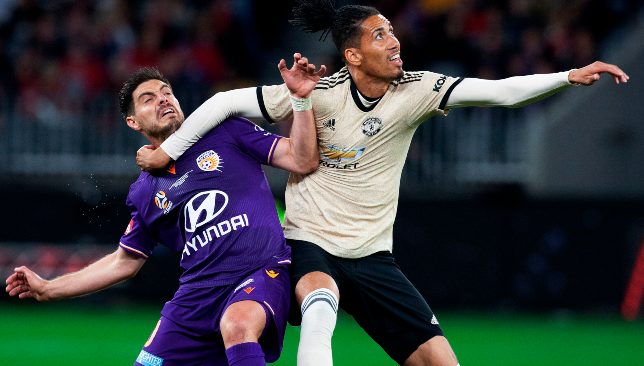
Chris Smalling.
What they needed to do
Roma needed to bash the reset button after a season of rampant recrimination and frustration.
2018/19 was a tumultuous one at Stadio Olimpico. Stalwart captain Daniele De Rossi’s 18-year attachment was unceremoniously terminated, three decades of unbroken service from Francesco Totti – their greatest-ever player and foremost icon – ended with a diatribe at chairman James Pallotta, sporting director Monchi returned to Sevilla and the unravelling of head coach Eusebio Di Francesco’s reign ultimately led to a dispiriting sixth-placed finish.
Shakhtar Donetsk head coach Paulo Fonseca has added an injection of energy and a necessary change of direction. New sporting director Gianluca Petrachi was hired from Torino to furnish the Portuguese with necessary players and undertake significant surgery on an underperforming squad.
What they got done
Tifosi who screeched for a revolution throughout the torturous final months of last term got exactly what they wished for.
The pressing need to gain capital and satisfy FFP requirements saw Manolas, regrettably, sacrificed after five outstanding years of service. What followed next is exemplar of where Roma currently find themselves.
Italy prospect Mancini and experienced United outcast Smalling came in on loans to bolster weakened centre-back options. Heart palpitations can stop about an increased use of the chaotic Juan Jesus.
The 22-year-old Diawara also travelled in the opposite direction to Manolas. This deepened a youthful pool of midfielders, from which they also won a battle against AC Milan for ex-France Under-21 international Veretout.
The splash on Spinazzola adds significant quality at full-back. Choosing two from him, Aleksandar Kolarov and captain Alessandro Florenzi is an onerous task.
Deadline-day temporary deals for Mkhitaryan and Kalinic provide a shot of experience, plus players who should be eager to correct the unfulfilling course their careers have taken of late.
Deadwood remains in lavishly remunerated playmaker Javier Pastore. The opportunistic sales of Luca Pellegrini, El Shaarawy and Gerson are a bonus, plus the shedding of the disappointing Nzonzi’s wages.
It is also hoped that Spain back-up goalkeeper Lopez performs far better than departed Sweden No1 Olsen.
A pair of early season draws hint, however, that the process could be a trying one.
Strongest 2019/20 line-up – 4-2-3-1: Pau Lopez; Alessandro Florenzi, Chris Smalling, Gianluca Mancini, Leonardo Spinazzola; Bryan Cristante, Lorenzo Pellegrini; Cengiz Under, Nicolo Zaniolo, Henrikh Mkhitaryan; Edin Dzeko